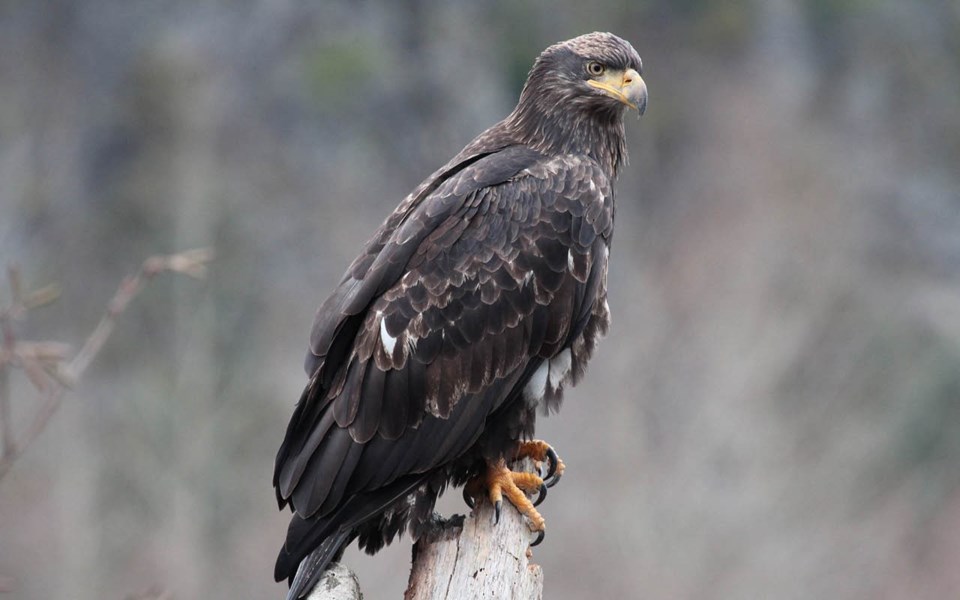For two decades, it wasn't uncommon for volunteers at the annual Winter Eagle Count at Brackendale to tally thousands of the charismatic birds.
From 1988 to 2007, volunteers counted about 1,800 eagles annually on average, with the highest count (3,769) coming in 1994.
But in the past decade, the count has exceeded 1,000 just once (1,617 in 2014), and the lowest count on record took place in 2016, when just 411 eagles were tallied.
But the numbers have shown some encouraging trends in recent years, said count coordinator Christopher Di Corrado.
"When I look at the data from the actual count itself, it seems to be a slight, over the long term ... downward trend," he said.
"But in the very short term, it's going up."
Since the record-low 411 total in 2016, count numbers have been increasing: 698 in 2017, followed by 962 last year.
Organizers are hopeful that trend will continue at the 33rd-annual count on Jan. 6.
"From the weekend eagle watching there seem to be good numbers of birds around, so we might actually have more than last year, or about the same, perhaps," Di Corrado said.
As always, the Squamish Environment Society, which hosts the event, is looking for volunteers to help with the count.
Anyone interested in getting involved can email eaglewatch@squamishenvironment.ca.
"If you've never done it before and you don't know anything about birds, you have to figure out your skill and your want: What you actually want to do?" Di Corrado said.
"Some people are out driving around looking for eagles in certain areas, some people are hiking ... and then there's a group of people that go rafting down the rivers too, also counting the eagles in certain sections."
And of course, being Squamish, volunteers can expect either beautiful, sunny skies and cool weather or rain, snow and fog, Di Corrado joked.
"There's a little something for everybody," he said.
"It may not be for the faint of heart, but we try to match people to their skill, knowledge, and team them up with somebody who is experienced already."
The annual count numbers can be affected by food sources or water levels, Di Corrado said.
"If there are no salmon, they're not going to stick around, because there's no food for them," he said.
"And then if there's big changes in the water fluctuations, if we had really big, heavy storms and the water levels rise, that will wash a lot of the salmon carcasses out of the smaller rivers and out of the Squamish River as well."
The annual count serves multiple purposes, Di Corrado said, including fostering closeness amongst neighbours.
"It builds a sense of community, and gets people out to explore different areas, and then they're looking for a big, beautiful, charismatic bird that everybody knows, everybody likes to see, and people care about these big birds and their population," he said.
But most importantly, the count serves as a one-day snapshot of the area's ecosystem health, and how it might be changing.
"(Eagles) are a good indicator of what's happening in the environment," he said.
"It adds to a long baseline data that started almost 33 years ago, and we can look at the changes over that time to understand the environment a little bit better, because there is so many places in Canada and the world where we don't."
For more information head to www.squamishenvironment.ca.




